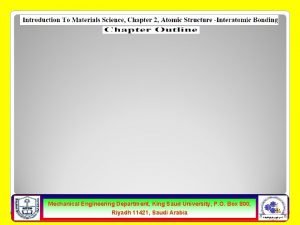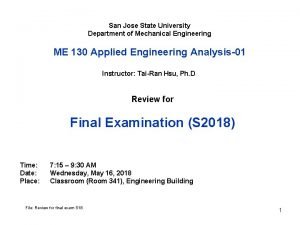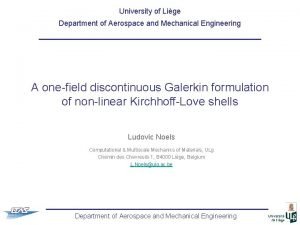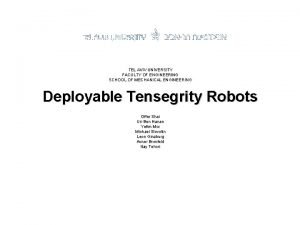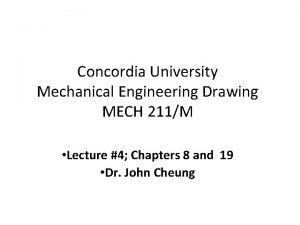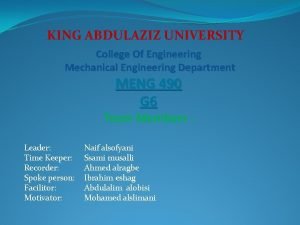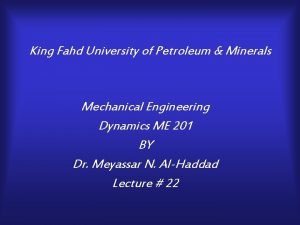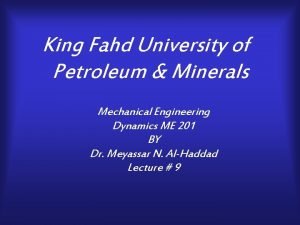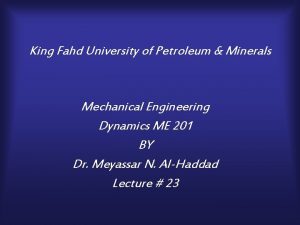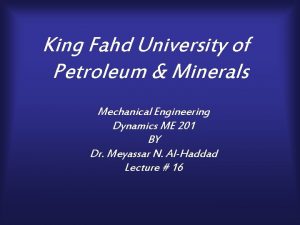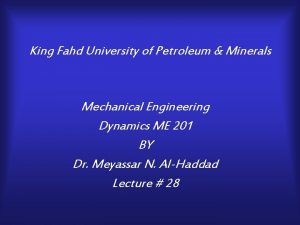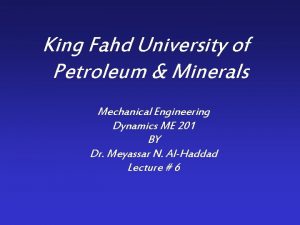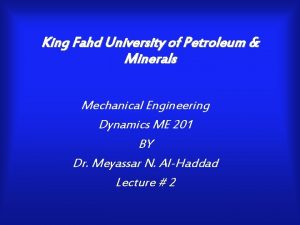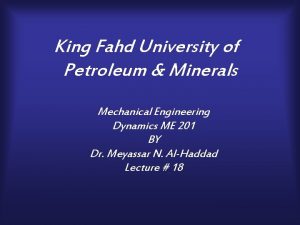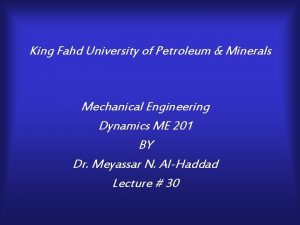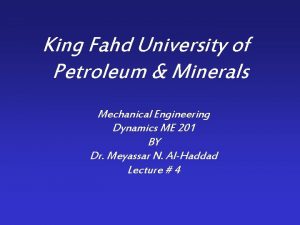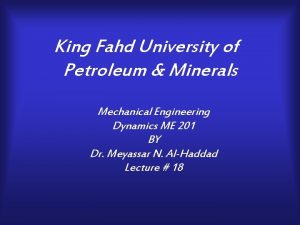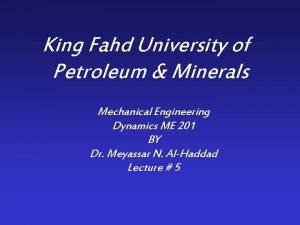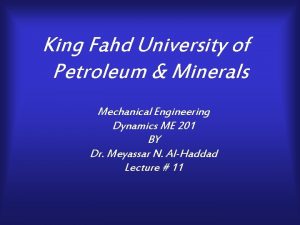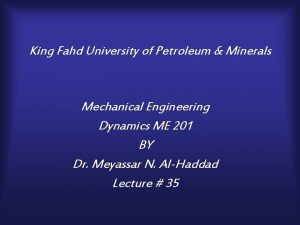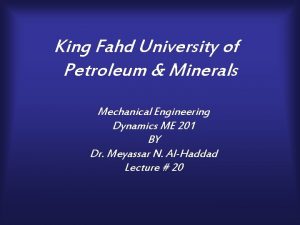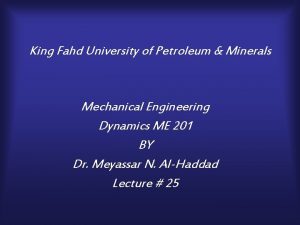King Fahd University of Petroleum Minerals Mechanical Engineering

















- Slides: 17

King Fahd University of Petroleum & Minerals Mechanical Engineering Dynamics ME 201 BY Dr. Meyassar N. Al-Haddad Lecture # 3

12. 3 Rectangular Kinematics: Erratic Motion Omitted

Objective • To investigate particle motion along a curved path using three coordinate systems – Rectangular Components – Normal and Tangential Components – Polar & Cylindrical Components

• Section 12. 4 in your text • Path is described in three dimensions • Position, velocity, and acceleration are vectors

Position * S is a path function * The position of the particle measured from a fixed point O is given by the position vector r = r(t) Example : r = {sin (2 t) i + cos (2 t) j – 0. 5 t k}

Displacement • The displacement Dr represents the change in the particle’s position • Dr = r’ - r

Velocity • Average velocity • Instantaneous velocity • As Dt = 0 then Dr = Ds • Speed • Since D r is tangent to the curve at P, then the velocity is tangent to the curve

Acceleration • Average acceleration: • Hodograph curve “velocity arrowhead points” • Instantaneous acceleration: Hodograph

Acceleration (con. ) • a acts tangent to the hodograph • a is not tangent to the path of motion • a directed toward the inside or concave side

12. 5 Curvilinear Motion: Rectangular Components • Rectangular : x, y, z frame

Position • Position vector r • r=xi+yj+zk • The magnitude of r is always positive and defined as • Unit vector • The direction cosines are

Velocity • Velocity is the first time derivative of r • Where • Magnitude of velocity • Direction is always tangent to the path

Problem • The position of a particle is described by r. A= {2 t i +(t 2 -1) j} ft. where t is in seconds. Determine the position of the point and the speed at 2 second. •

Acceleration • Acceleration is the first time derivative of v • Where • Magnitude of acceleration • Direction is not tangent to the path

Example 12. 9 • The distance of the balloon from A at 2 sec • The magnitude and direction of velocity at 2 sec • The magnitude and direction of acceleration at 2 sec Position Velocity Acceleration A X=8 t

Example 12. 10 t in second arguments in radians At t = 0. 75 s find location, velocity, and acceleration Note: Put your calculator in Rad Mode

 King saud university mechanical engineering
King saud university mechanical engineering Fahd al kheralla
Fahd al kheralla Fahd: hi, ryan. where are you going?
Fahd: hi, ryan. where are you going? Fuente del rey fahd
Fuente del rey fahd Yildiz technical university mechanical engineering
Yildiz technical university mechanical engineering Sjsu mechanical engineering
Sjsu mechanical engineering Czech technical university mechanical engineering
Czech technical university mechanical engineering American university mechanical engineering
American university mechanical engineering American university mechanical engineering
American university mechanical engineering Yale university mechanical engineering
Yale university mechanical engineering University of florida mechanical engineering
University of florida mechanical engineering Tel aviv university mechanical engineering
Tel aviv university mechanical engineering Concordia university mechanical engineering
Concordia university mechanical engineering Faculty of mechanical engineering thammasat university
Faculty of mechanical engineering thammasat university College of engineering, king abdulaziz university
College of engineering, king abdulaziz university Pros and cons of petroleum engineering
Pros and cons of petroleum engineering Pedec
Pedec Ufa state petroleum technical university
Ufa state petroleum technical university
